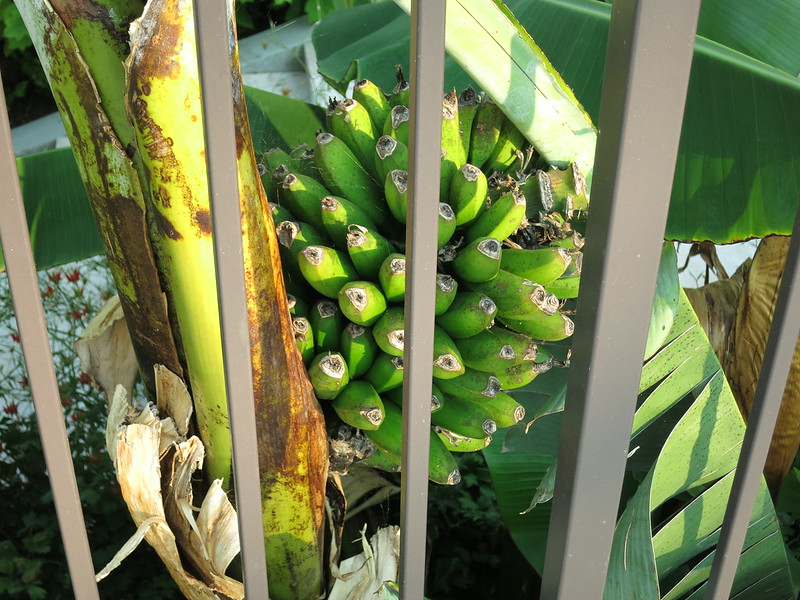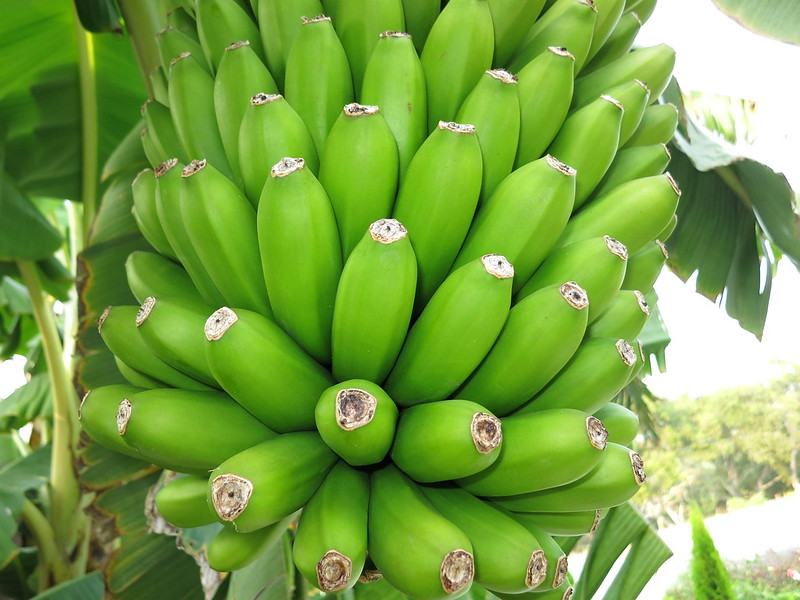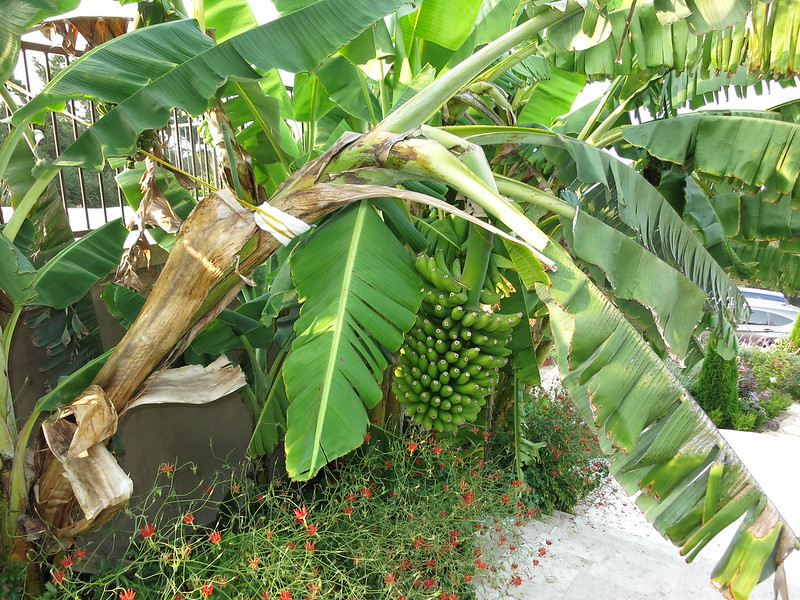Musa Rajapuri
From Bananas Wiki
| Revision as of 17:29, 31 August 2018 (edit) Meizzwang (Talk | contribs) (→Pictures) ← Previous diff |
Current revision (18:22, 6 October 2020) (edit) BackyardBananaJoe-30372 (Talk | contribs) (→Research Notes) |
||
| Line 59: | Line 59: | ||
| https://farm1.staticflickr.com/940/43232112384_2bf8937b0d_c.jpg | https://farm1.staticflickr.com/940/43232112384_2bf8937b0d_c.jpg | ||
| - | Rajapuri ''Choking'''''Bold text''': the bunch bursted out of the side of the pseudostem instead of emerging from the top of the plant. Credit: Mike Wang | + | Rajapuri '''Choking''': the bunch bursted out of the side of the pseudostem instead of emerging from the top of the plant. Credit: Mike Wang |
| Line 78: | Line 78: | ||
| plant to grow in marginal areas or where a grower does not intend to put much care into the cultivation | plant to grow in marginal areas or where a grower does not intend to put much care into the cultivation | ||
| of bananas. The heads of fruit are of moderate size with medium sized fruit. | of bananas. The heads of fruit are of moderate size with medium sized fruit. | ||
| - | This tasty banana [[Info:Choking|chokes]] easier than Orinoco. It is very cold hardy, and the leaves will not turn yellow | + | This tasty banana [[Info:Choking|chokes]] easier than Orinoco. Choking is presumably caused by fluctuations in temperature, growth rate, or both. It is very cold hardy, and the leaves will not turn yellow |
| even with a light frost. It will grow and produce even in the poorest soil. | even with a light frost. It will grow and produce even in the poorest soil. | ||
| Not recommended for South Florida due to [[Black Sigatoka]]. The fruit can be used fresh or green. | Not recommended for South Florida due to [[Black Sigatoka]]. The fruit can be used fresh or green. | ||
| Line 173: | Line 173: | ||
| 37.91, -122.32, [[User:keenanpepper]] | 37.91, -122.32, [[User:keenanpepper]] | ||
| 37.739481, -25.668315, [[User:Pedrotvs]] | 37.739481, -25.668315, [[User:Pedrotvs]] | ||
| + | 28.404228, -81.203402, [[User: Backyard Banana Joe]] | ||
| </googlemap> | </googlemap> | ||
Current revision
Contents |
Cultivar Name
Musa 'raja puri'
Synonyms
Pictures

(credit the flying dutchman)
(credit Gabe15)
(credit Gabe15)
(credit Gabe15)

(credit Gabe15)

(credit Gabe15)
(credit Dombo)
(credit Dombo)
(credit Dombo)
 Raji Puri Male Flowers
(credit sbl)
Raji Puri Male Flowers
(credit sbl)

female flowers, color can be variable (credit: Mike Wang)

Rajapuri Choking: the bunch bursted out of the side of the pseudostem instead of emerging from the top of the plant. Credit: Mike Wang

Credit: Mike Wang

Rajapuri doesn't usually require propping, unless you have a very heavy bunch. Credit: Mike Wang
Description
The 'Rajapuri' is small at 6 to 8 feet tall. This plant that originated from India is a first choice for landscaping. The plant is totally green, has a very thick stem and stands up very well to wind. The leaves are wider than those of most bananas, growing up to 3 feet wide. It is the best plant to grow in marginal areas or where a grower does not intend to put much care into the cultivation of bananas. The heads of fruit are of moderate size with medium sized fruit. This tasty banana chokes easier than Orinoco. Choking is presumably caused by fluctuations in temperature, growth rate, or both. It is very cold hardy, and the leaves will not turn yellow even with a light frost. It will grow and produce even in the poorest soil. Not recommended for South Florida due to Black Sigatoka. The fruit can be used fresh or green.
- Genetic Group -
AAB
Origin
India
- Date realized in trade -
Usage
Dessert banana
Flowering
- Time To Bloom - Outdoors in Northern California, ~3 years after hardening off a tissue culture start. Definitely much faster in tropical and subtropical climates.
- Time To Harvest -Outdoors in Northern California, ~7 months at the fastest, really depends on when it fruits, and how warm the grow season is. For sure it's much faster in tropical and subtropical climates. Compared to other cold hardy banana varieties, this one is pretty quick!
Cultivation
- Mature Height -
6-8
- Survival Zone -
8-9
- Fruiting Zone -
- Cold Hardiness General -
Good cold tolerance, and easier to protect due to lower height.
- Cold Hardiness Personal -
- Wind -
Wind tolerant, the Rajapuri leaves do not get shredded very badly in strong winds.
- Sun -
Full sun
- Taste Description -Optimal flavor about 1-2 days at room temperature after the fingers turn yellow. At peak ripeness, flavor is sweet with a tangy background, very good quality!
- Personal Notes -
- Growth tips In cooler climates, be careful with over watering and overfeeding this variety: since it's a true dwarf, the growth rate and consumption of nutrients is slightly lower than a regular sized banana.
Known Afflictions
- Pests -
Borers, grasshopper and root nematodes
- Susceptible Diseases -
Panama disease and black sigatoka
- Resistant Diseases -
Research Notes
- Links to useful discussion threads in the forum:
- Typical Price Range -
Members Growing This Banana
External
- Links
- (Links to other useful pages on the web that mention this banana. Example: International Banana Society)
- Sources






